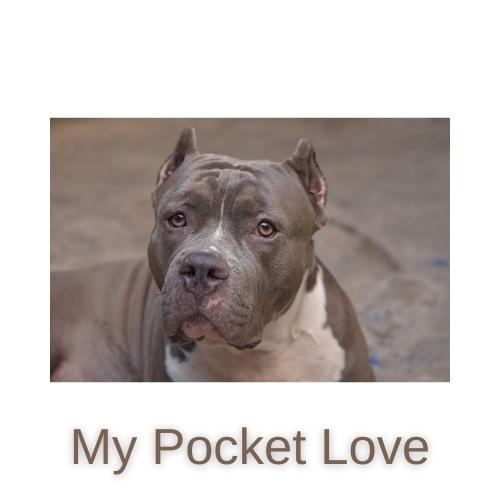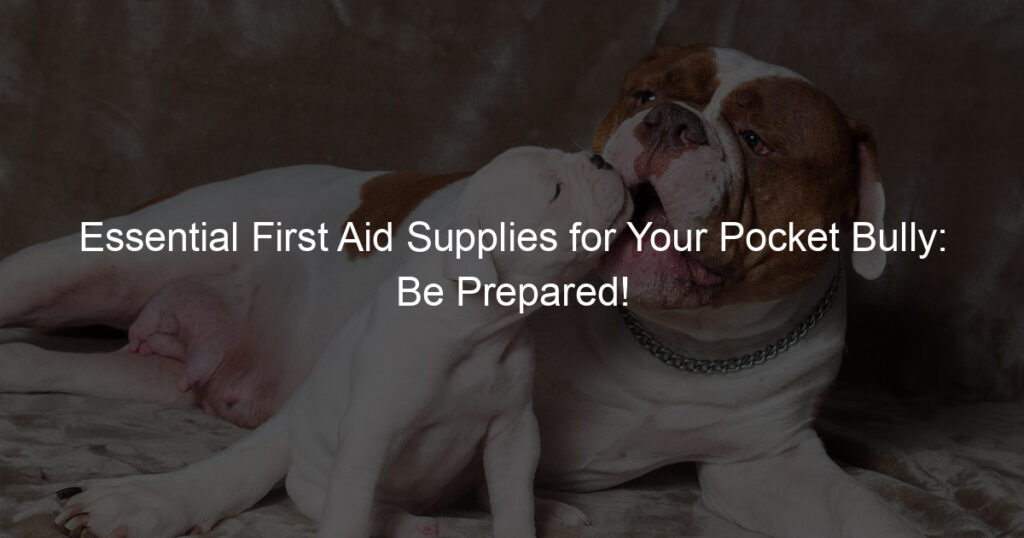
Introduction to Pocket Bullies Sleep Patterns
Just like humans, Pocket Bullies, a popular breed of dog, also need a good night’s sleep to stay healthy and active. Sleep plays a crucial role in their overall well-being, affecting their mood, energy levels, and even their ability to learn new things. This article aims to provide an in-depth understanding of Pocket Bullies’ sleep patterns and behaviors.
- Understanding the importance of sleep for Pocket Bullies
- Overview of Pocket Bullies sleep behavior
Sleep is essential for Pocket Bullies as it helps in their growth and development. It allows their body to rest, heal, and rejuvenate, ensuring they are ready to take on the next day with full energy. Lack of sleep can lead to various health problems such as obesity, heart disease, and even behavioral issues like aggression or anxiety. Therefore, ensuring your Pocket Bully gets enough sleep is as important as providing them with a balanced diet and regular exercise.
Pocket Bullies typically sleep for about 12-14 hours a day, which includes both nighttime sleep and naps throughout the day. Their sleep pattern is influenced by various factors such as their age, health, and activity levels. Puppies and older dogs tend to sleep more than young adults. Pocket Bullies are known to be quite adaptable and can adjust their sleep schedule according to their owner’s lifestyle. However, they also need a quiet and comfortable space where they can sleep undisturbed.
In the following sections, we will delve deeper into the sleep cycles of Pocket Bullies, their common sleep issues, and how you can establish a healthy sleep routine for your furry friend. Stay tuned to learn more about ensuring a good night’s sleep for your Pocket Bully.
Understanding Pocket Bullies Sleep Cycles
Just like humans, Pocket Bullies also have specific sleep cycles. Knowing these cycles can help you understand your pet’s sleep pattern better and ensure they get the right amount of rest. Let’s delve into the different stages of a Pocket Bully’s sleep cycle.
Stages of Pocket Bullies Sleep Cycle
The sleep cycle of a Pocket Bully consists of four main stages. Each stage plays a crucial role in your pet’s rest and recovery. Here are the stages:
- Awake Stage
- Light Sleep Stage
- Deep Sleep Stage
- REM Sleep Stage
This is when your Pocket Bully is fully alert and active. During this stage, they are likely to engage in various activities such as playing, eating, or exploring their surroundings.
During the light sleep stage, your Pocket Bully starts to relax and wind down. Their heart rate slows down, and their body temperature drops slightly. This stage prepares them for deep sleep.
The deep sleep stage is when your Pocket Bully is in a state of complete rest. Their body is relaxed, and their brain activity is at its lowest. This stage is crucial for physical recovery and growth.
REM stands for Rapid Eye Movement. During this stage, your Pocket Bully may appear to be twitching or moving their paws. This is because they are dreaming. The REM stage is essential for mental recovery and memory consolidation.
Understanding these stages can help you ensure your Pocket Bully gets the right amount of sleep. Remember, a well-rested Pocket Bully is a happy and healthy one!
Decoding Pocket Bullies Sleeping Habits
Understanding the sleeping habits of your Pocket Bully can help you ensure they are getting the rest they need for optimal health and happiness. There are several factors that can influence how much and how well your Pocket Bully sleeps.
Factors Influencing Pocket Bullies Sleep
Several factors can influence the sleep habits of your Pocket Bully. These include their age, health status, diet, and level of physical activity. Let’s delve into each of these factors in more detail.
- Age and sleep requirements for Pocket Bullies: Pocket Bullies, like all dogs, have different sleep requirements at different stages of life. Puppies generally need more sleep than adults, often sleeping up to 20 hours a day. As they grow older, their sleep requirements decrease, but they still need a good 12-14 hours of sleep per day.
- Health and sleep: A Pocket Bully’s health can significantly affect their sleep. If your Pocket Bully is unwell, they may sleep more than usual. On the other hand, certain health issues can cause restlessness and difficulty sleeping. Regular vet check-ups can help ensure your Pocket Bully is in good health and sleeping well.
- Diet and sleep: What your Pocket Bully eats can also influence their sleep. A balanced diet can promote good sleep, while a poor diet can lead to sleep problems. Foods rich in tryptophan, a sleep-promoting amino acid, can help your Pocket Bully sleep better. These include turkey, chicken, fish, and eggs.
- Exercise and sleep: Regular exercise is important for your Pocket Bully’s overall health and can also improve their sleep. Exercise helps tire your Pocket Bully out, making it easier for them to fall asleep and stay asleep. However, avoid exercising your Pocket Bully too close to bedtime as this can make them too energized to sleep.
Understanding these factors can help you ensure your Pocket Bully is getting the rest they need. Remember, a well-rested Pocket Bully is a happy and healthy Pocket Bully.
Establishing a Sleep Schedule for Your Pocket Bully
Creating a consistent sleep schedule for your Pocket Bully is essential for their health and well-being. A regular sleep routine helps regulate your pet’s internal clock, leading to improved mood, energy, and overall health. Here’s how to create a comfortable sleep environment for your Pocket Bully.
Creating a Comfortable Sleep Environment
A comfortable sleep environment is key to ensuring your Pocket Bully gets a good night’s rest. Here are some steps you can take:
- Choosing the right bed: Your Pocket Bully’s bed should be comfortable and supportive. Consider a bed with raised edges for your pet to lean against. The size of the bed should also be appropriate for your pet’s size. A too-small bed can cause discomfort, while a too-large bed can make your pet feel insecure.
- Maintaining a consistent temperature: Pocket Bullies prefer a consistent temperature. Too hot or too cold environments can disrupt their sleep. Aim for a room temperature of around 65-75 degrees Fahrenheit. You can use a room thermometer to monitor the temperature.
- Reducing noise and light: Like humans, Pocket Bullies can be disturbed by loud noises and bright lights. Try to minimize these as much as possible. Consider using blackout curtains and white noise machines to create a peaceful environment.
Remember, a comfortable sleep environment is just one part of establishing a good sleep schedule for your Pocket Bully. Regular exercise, a healthy diet, and a consistent bedtime routine also play a crucial role.
Common Sleep Issues in Pocket Bullies
Just like humans, Pocket Bullies can also experience sleep issues. These problems can affect their overall health and behavior. In this section, we will discuss some common sleep disorders that Pocket Bullies may encounter and how to address them.
Identifying and Addressing Sleep Disorders
Understanding the signs of sleep disorders in Pocket Bullies is the first step towards helping them. Here are some common sleep issues:
- Insomnia in Pocket Bullies
- Sleep Apnea in Pocket Bullies
- Narcolepsy in Pocket Bullies
Insomnia refers to difficulty in falling asleep or staying asleep. In Pocket Bullies, this can manifest as restlessness during the night, frequent waking, or difficulty settling down to sleep. This can be caused by various factors such as stress, discomfort, or underlying health issues. If your Pocket Bully is showing signs of insomnia, it’s important to consult with a vet to determine the cause and appropriate treatment.
Sleep apnea is a condition where the dog stops breathing for short periods while asleep. This can be particularly common in brachycephalic breeds like the Pocket Bully due to their short snouts. Symptoms can include loud snoring, gasping for air, or excessive daytime sleepiness. If you suspect your Pocket Bully has sleep apnea, it’s crucial to get a diagnosis from a vet as this condition can lead to serious health problems if left untreated.
Narcolepsy is a neurological disorder that affects the control of sleep and wakefulness. Dogs with narcolepsy experience sudden bouts of sleep, often at inappropriate times. While this condition is rare, it can occur in any breed, including Pocket Bullies. If your dog suddenly falls asleep during activities, it might have narcolepsy. This condition is not life-threatening, but it can impact your dog’s quality of life. Therefore, it’s important to consult with a vet for proper management strategies.
Remember, early identification and treatment of these sleep disorders can greatly improve your Pocket Bully’s quality of life. Always consult with a professional if you notice any changes in your dog’s sleep patterns.
Case Study: Improving a Pocket Bully’s Sleep Routine
In this section, we will explore a real-life example of a Pocket Bully whose sleep routine was significantly improved. This case study will provide valuable insights and practical steps that can be applied to help your Pocket Bully achieve a healthier sleep routine.
- Background of the Pocket Bully
Meet Max, a two-year-old Pocket Bully. Max is a lively and friendly dog, loved by his family. However, Max’s owners noticed that he was having trouble sleeping. He would often wake up in the middle of the night and seemed restless during his sleep.
- Identifying the Sleep Issue
Max’s owners decided to consult a veterinarian. After a thorough examination and observation of Max’s sleep patterns, the vet concluded that Max was suffering from sleep fragmentation, a common sleep issue among Pocket Bullies. This condition was causing Max to have broken, non-restful sleep.
- Steps Taken to Improve Sleep
The vet suggested a few changes in Max’s routine to help him sleep better. These included setting a consistent sleep schedule, providing a comfortable sleeping environment, and incorporating more physical activity during the day to tire Max out. Max’s owners also started giving him a small treat before bedtime to associate sleep with positive experiences.
- Results and Key Takeaways
After implementing these changes, Max’s sleep improved significantly. He started sleeping through the night and seemed more rested and energetic during the day. This case study highlights the importance of understanding and addressing sleep issues in Pocket Bullies. It also shows that with the right steps, it is possible to improve a Pocket Bully’s sleep routine.
In conclusion, a healthy sleep routine is crucial for a Pocket Bully’s overall well-being. If you notice any changes in your Pocket Bully’s sleep patterns, do not hesitate to seek professional help. Remember, a well-rested dog is a happy dog!
Conclusion: Ensuring a Healthy Sleep Routine for Your Pocket Bully
As we conclude, let’s revisit the key points we’ve discussed about the importance of sleep for Pocket Bullies, their sleep patterns, and how to maintain a healthy sleep routine for them.
- Revisiting the importance of sleep for Pocket Bullies
- Key takeaways on Pocket Bullies sleep patterns
- Final thoughts on maintaining a healthy sleep routine for your Pocket Bully
Sleep plays a crucial role in the overall health and well-being of your Pocket Bully. It aids in their growth, development, and energy replenishment. Lack of proper sleep can lead to behavioral issues and health problems. Therefore, ensuring your Pocket Bully gets the right amount of sleep is as important as providing them with a balanced diet and regular exercise.
Pocket Bullies, like other dogs, have different sleep patterns than humans. They tend to sleep more, around 12-14 hours a day. Puppies and older dogs may sleep even more. Their sleep cycles include both REM and non-REM stages. Understanding these patterns can help you establish a healthy sleep routine for your Pocket Bully.
Establishing and maintaining a healthy sleep routine for your Pocket Bully requires consistency and patience. Regular exercise, a comfortable sleeping environment, and a consistent sleep schedule can help ensure your Pocket Bully gets the rest they need. Remember, a well-rested Pocket Bully is a happy and healthy one.
In conclusion, sleep is a vital part of your Pocket Bully’s health and well-being. By understanding their sleep patterns and establishing a healthy sleep routine, you can ensure your Pocket Bully leads a happy, energetic, and healthy life. Remember, every dog is unique, so what works for one may not work for another. Always be observant and responsive to your Pocket Bully’s needs.














